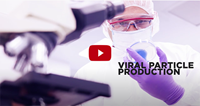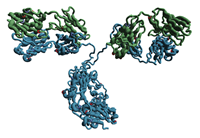Interaction Quantification & Characterization Using Analytical Ultracentrifugation
Analytical Ultracentrifugation (AUC) is one of the most powerful biophysical tools used today for the characterization of biological samples ranging from small drug molecules to intact viruses, vesicles and microparticles. Using this method, allows you to work with biological samples in the native state. It does not depend on a reporter species or custom-coated substrates which are required by techniques such as NMR, EPR, SPR and fluorescence spectroscopy.
Read on for a more in-depth explanation of AUC and discover how this instrument could take your research to the next level.
 From basic research to biologics production, viral systems play an important role in the large-scale production of recombinant proteins. The production and purification of viral particles is a multi-step process that needs to be carefully optimized to maximize viral titers and protein yield.
From basic research to biologics production, viral systems play an important role in the large-scale production of recombinant proteins. The production and purification of viral particles is a multi-step process that needs to be carefully optimized to maximize viral titers and protein yield.
3rd Party Reference Publications
- Crystal structure of SARS-CoV-2 main protease provides a basis for design of improved α-ketoamide inhibitors
- Oligomerization of the carboxyl terminal domain of the human coronavirus 229E nucleocapsid protein
- The N-terminal octapeptide acts as a dimerization inhibitor of SARS coronavirus 3C-like proteinase
- Interaction between heptad repeat 1 and 2 regions in spike protein of SARS-associated coronavirus: implications for virus fusogenic mechanism and identification of fusion inhibitors

 Explore our Analytical Ultracentrifugation (AUC) section to learn how AUC enables characterization of samples in their native state under biologically relevant solution conditions. For many research questions, there is no satisfactory analytical substitute for AUC.
Explore our Analytical Ultracentrifugation (AUC) section to learn how AUC enables characterization of samples in their native state under biologically relevant solution conditions. For many research questions, there is no satisfactory analytical substitute for AUC. Learn more with Dr. Elmar Spies why Analytical Ultracentrifugation is an expectional technique for the investigation of PPIs due to the fact the proteins are analyzed in solution with good chances to not influence the protein's binding behavior.
Learn more with Dr. Elmar Spies why Analytical Ultracentrifugation is an expectional technique for the investigation of PPIs due to the fact the proteins are analyzed in solution with good chances to not influence the protein's binding behavior.